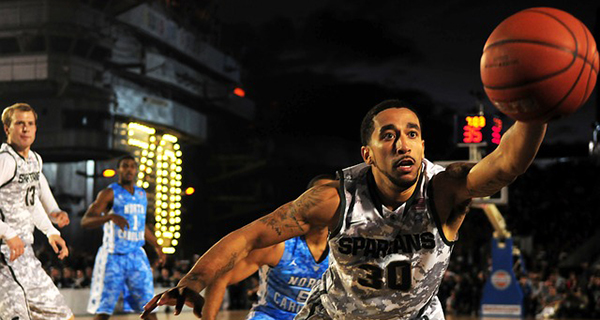 This year marks the 20th anniversary of the debut of the transcendent TV series The Sopranos. As its creator, David Chase understands better than most that a lousy ending can ruin a lot of the good work.
This year marks the 20th anniversary of the debut of the transcendent TV series The Sopranos. As its creator, David Chase understands better than most that a lousy ending can ruin a lot of the good work.
Chase famously used a sudden blackout to conclude the final episode while Journey’s Don’t Stop Believin’ played in the background.
There was plenty of debate about the unconventional ending but it did nothing to diminish what had gone before. (The latest theory on The Sopranos finale is that Chase was whacking his audience for being no better than Tony as we revelled in his violence and evil.)
How to conclude a great sporting event is equally important. And just as fraught with error. And controversy.
The National Hockey League, for instance, decided to add five-minute overtime to end ties in 1983.
Tired of wishy-washy endings and conscious of avoiding endless overtimes that would annoy broadcasters and their travel partners, the league added a best-of-five shootout in 2005.
In the first year of the shootout, 51.6 per cent of OT games ended in a shootout. To resolve more games in the OT, the league instituted a three-on-three format in 2015. That dropped the number of games using a shootout to 37 per cent by 2017.
And all of that is fine according to a lot of people, who think the shootout is an abomination, a skills contest at best. These traditionalists want a return to ties or a longer OT period to resolve things. They point to the National Basketball Association, which plays as many five-minute OT periods as needed to resolve a game.
Others think the spectacular goals and the tension of sudden-death are a just reward for fans who’ve invested more than three hours watching the game. They deserve a conclusion. Plus, American TV highlight shows adore shootouts, which blanket the nightly roundup shows.
The giveaway over how the NHL itself feels comes in the playoffs, when games are resolved by a goal in the five-on-five format, no matter how late or absurd the conclusion.
For now, however, three-on-three plus a shootout seems engrained in the NHL’s regular season. And that won’t stop the bitching.
The National Football League added OT in 1974 to avoid ties. For much of its existence, OT was sudden death, with the first team scoring in any fashion winning the game. When enough people contended this format was unfair, the NFL tweaked the rules to allow both teams to have a possession in OT – unless the first team scores a touchdown.
But the remaining critics point to the system used in the Canadian Football League and National Collegiate Athletic Association (NCAA) in the U.S. There, teams start from the 25-yard-line and have an untimed chance to match any scores their opponent makes. When one side fails to match, the game ends. This can produce three, four, sometimes five OT periods and some wild box-car scores.
Soccer, famously, has no trouble with the shootout even in the final of the World Cup. Skill contest be damned, they’ve accepted the randomness of destiny.
Paradoxically, soccer has no trouble with ties in the regular season. Considering the paucity of goals in the sport, that’s probably a matter of survival against games that could go into the next day.
Now we see that Grand Slam tennis is rejigging its rules to avoid the plague of endless overtimes, like the infamous 1969 match between Pancho Gonzales and Charlie Pasarell that went 22-24, 1-6, 16-14, 6-3, 11-9 in a two-day match.
Tennis first adopted tiebreakers in 1970, before refining them in 1975 as a first-to-seven-points format that must be won by two points. But that hasn’t ended the hex of John Isner. The towering American has played some hellacious final sets in majors, notably his 6-4, 3-6, 6-7, 7-6, 70-68 Wimbledon match over three days against Nicolas Mahut. (For spice, Isner had a fifth set against Kevin Anderson last year that went 26-24.)
This year, Wimbledon will use a best-of-12 tiebreaker in decisive sets that reach 12-12. This week’s Australian Open will play best-of-18 when the sets reach 6-6. The U.S. Open will stick with the best-of-nine format to decide final sets. Only the French Open persists with the old format, which is probably what you’d expect from the French.
Finally, golf has OT rules that vary widely. Unlike tennis, which can flick on the lights, golf is governed by the sun. Playoffs on the final day are often a race against darkness. For that reason, the U.S. Open played an 18-hole match-play format on the Monday after the tournament’s stroke play ended.
But no more. Conceding to the TV networks, the U.S. Open now has a two-hole aggregate playoff the same day. The Open Championship has a four-hole aggregate while the PGA Championship goes with three. The Masters, played in the shorter sun days of April, goes sudden-death in extra holes.
And then there’s baseball, which will play as many innings as it takes to resolve a game. Every summer, it seems there’s an endurance match that goes 18 innings. No one foresees that changing.
In fact, if it were up to Major League Baseball, you’d still be hearing Don’t Stop Believin’ as Tony and his clan dine forever.
Troy Media columnist Bruce Dowbiggin career includes successful stints in television, radio and print. A two-time winner of the Gemini Award as Canada’s top television sports broadcaster, he is also the publisher of Not The Public Broadcaster.
The views, opinions and positions expressed by columnists and contributors are the author’s alone. They do not inherently or expressly reflect the views, opinions and/or positions of our publication.


